
William Butterfield was a British Gothic Revival architect and associated with the Oxford Movement. He is noted for his use of polychromy.
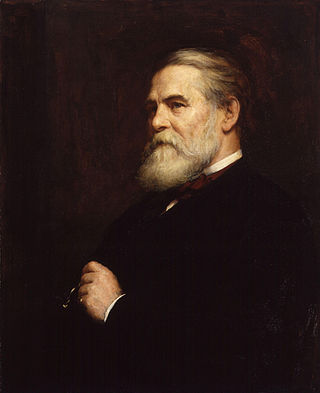
John Loughborough Pearson was a British Gothic Revival architect renowned for his work on churches and cathedrals. Pearson revived and practised largely the art of vaulting, and acquired in it a proficiency unrivalled in his generation. He worked on at least 210 ecclesiastical buildings in England alone in a career spanning 54 years.
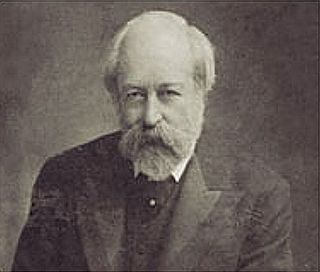
George Frederick Bodley was an English Gothic Revival architect. He was a pupil of Sir George Gilbert Scott, and worked in partnership with Thomas Garner for much of his career. He was one of the founders of Watts & Co.
John Oldrid Scott was a British architect.

Sir Arthur William Blomfield was an English architect. He became president of the Architectural Association in 1861; a Fellow of the Royal Institute of British Architects in 1867 and vice-president of the RIBA in 1886. He was educated at Trinity College, Cambridge, where he studied Architecture.

Garton on the Wolds is a village and civil parish on the Yorkshire Wolds in the East Riding of Yorkshire, England. It is situated approximately 3 miles (5 km) north-west of Driffield town centre and lies on the A166 road.

Sledmere is a village in the East Riding of Yorkshire, England, about 7 miles (11 km) north-west of Driffield on the B1253 road.
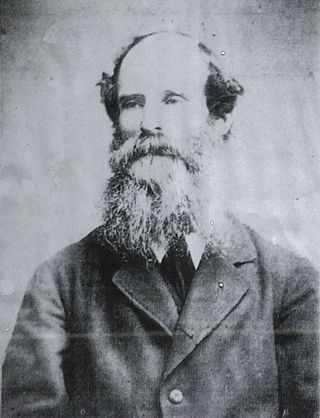
William White, FSA (1825–1900) was an English architect, noted for his part in 19th-century Gothic Revival architecture and church restorations.

Ewan Christian (1814–1895) was a British architect. He is most frequently noted for the restorations of Southwell Minster and Carlisle Cathedral, and the design of the National Portrait Gallery. He was Architect to the Ecclesiastical Commissioners from 1851 to 1895. Christian was elected A RIBA in 1840, FRIBA in 1850, RIBA President 1884–1886 and was awarded the Royal Gold Medal in 1887.
The Sykes Churches Trail is a tour of East Yorkshire churches which were built, rebuilt or restored by the Sykes family of Sledmere House in the East Riding of Yorkshire, England. The tour was devised by the East Yorkshire Historic Churches Group and is divided into a southern circuit and a planned northern circuit.
Benjamin Ferrey FSA FRIBA was an English architect who worked mostly in the Gothic Revival.
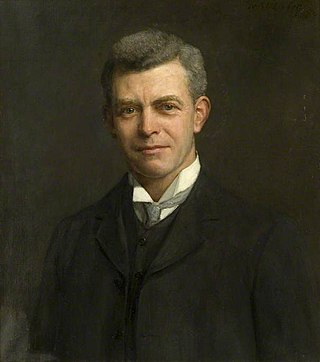
Sir Charles Archibald Nicholson, 2nd Baronet, was an English architect and designer who specialised in ecclesiastical buildings and war memorials. He carried out the refurbishments of several cathedrals, the design and build of over a dozen new churches, and the restoration of many existing, medieval parish churches.

Charles Buckeridge was a British Gothic Revival architect who trained as a pupil of Sir George Gilbert Scott. He practised in Oxford 1856–68 and in London from 1869. He was made an Associate of the Royal Institute of British Architects in 1861.
John West Hugall was an English Gothic Revival architect from Yorkshire.

The East Riding of Yorkshire is a local government district with the status of a unitary authority. For ceremonial purposes it includes the neighbouring city and unitary authority of Kingston upon Hull.
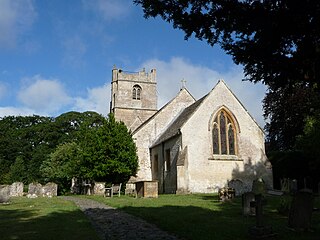
The Church of St Peter, Clyffe Pypard, Wiltshire is a parish church of the Diocese of Salisbury, England. It dates from the 13th and 15th centuries, and was restored by William Butterfield in 1860 and 1873–1874. The churchyard contains the grave of Nikolaus Pevsner and his wife Lola. St Peter's is a Grade I listed building and remains an active parish church.

John Arthur Newman was an English architectural historian. He was the author of several of the Pevsner Architectural Guides and was the advisory editor to the series.















